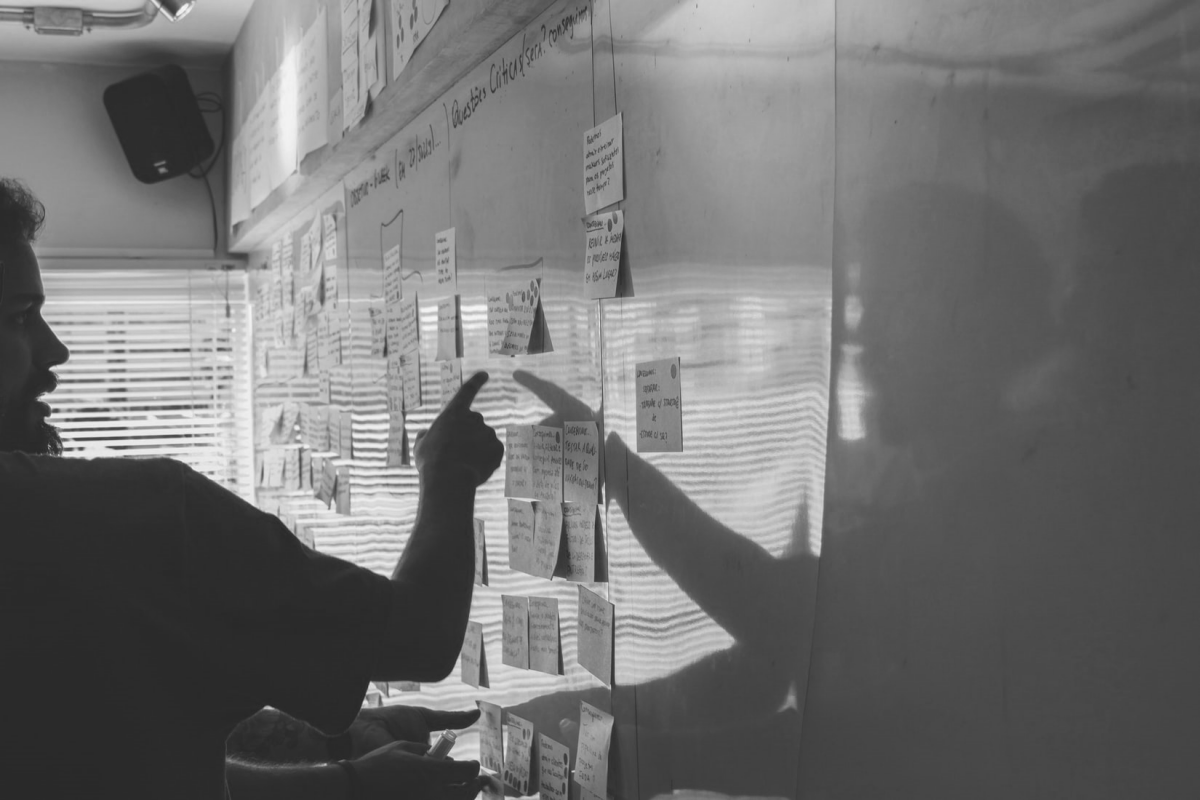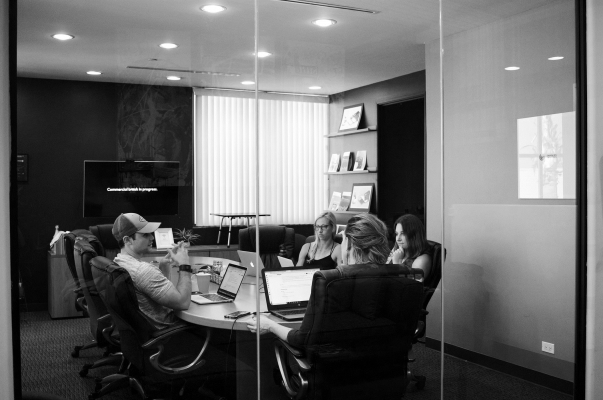Introduction
This blog post will look at some of the key scrum ceremonies and try and give some ideas on how to get the best out of them. It’s too easy to attend the sessions and go through the motions without getting any real value from them and without some attention they can become mundane. By ensuring a few things are included and certain behaviours followed I have found that the ceremonies are not just a tick box exercise but form the core of the project and encourage a productive and innovative team.
The daily stand up
Stay Focused The most obvious but often forgotten key to the daily stand up is keeping the meeting focused. Stick to done, doing and blockers. Its key to remember this is not a project update, session to align your diary or time to solutionise issues. People will always want to elaborate on things they are passionate about and share more but keeping the meeting focused and snappy keeps everyone energised and keeps their attention.
Walk the board Using the board helps the team focus on what they are working on and gives a visual aid of the work that needs to be done that day and in the sprint. This is also a good time to ensure people are burning down time on tasks and adding any extra tasks that have arisen. Add blockers where appropriate and you can always try adding risks and dependencies which I have found is great for keeping focus on items that can often be left languishing in an excel spreadsheet.
Check back on the goal Each sprint should have a goal and the stand up is a great time to check in on the goal and make sure that is still the main focus. Make the goal visible and ensure everyone is aware of this and working towards it.
Get the right people in the ‘room’ It is key that the correct personnel are at the stand up. It is vital the Product Owner (PO) attends the daily stand ups and if this is not happening this needs to be raised in your retrospective or ideally before. A key part of agile is delivering value quickly and consistently and without the PO to give direction and make decisions there is a risk you won’t be delivering the value where is needed. Likewise, it is important that the rest of the team are on the stand up and on time to get the best out of the meeting/call and reduce any repetition.
Ideally have these meetings face to face and standing up! However, in the current climate this is rarely possible so turn on those cams and let everyone see you ????
Challenge A good scrum master should challenge the team during the stand up and ask probing questions and a good team will challenge each other. This should always be done in an open fashion without any fear of persecution. This is not a time to call out things that have gone wrong but to ask open questions that encourage reflection and motivate the team team to look for innovative ways to solve problems, do things differently and deliver value.
Sprint planning
Set a Sprint Goal As mentioned in the daily stand up section it’s important to check in on the sprint goal at the daily stand up. It can be easy to lose focus on the sprint goal and keeping the team focused on the aims of the sprint is important. At the start of sprint planning an open discussion with the Product Owner (PO) about what they wish to get out of the sprint helps focus the team and hopefully means the sprint output delivers the value you are aiming for. Set the goal at the start of the sprint and regularly check back on this – having it at the top of the board as a story/tasks is a good way to keep visible and ensure the goal is still in the forefront on the teams focus.
Time It is very important to allocate ample time to planning at the start of a sprint. I personally prefer to do planning in the morning on the first day of the sprint when the team are fresh (well hopefully) and if not there is always coffee! If you have a large team and the content of the sprint is suitable it may be worth splitting the session for example into technical, governance, testing sections etc. People cannot realistically be at their best for a 3 hour session so splitting into smaller sessions helps get the best out of the team and prevents any planning lag!
Task it out Work on tasking out the stories and creating acceptance criteria and definition of done now can save time in the sprint. The more time spent on accurate estimations also helps with an accurate forecast and makes the burndown more realistic as you progress through the sprint. Ensuring a detailed acceptance criteria also makes sure that you can get input from the team while they are together and also adding a Definition of Done (DoD) reduces any risk if the PO is not available.
Use the Product Owner Use the planning session to get as much detail as you can from the product owner this is a great time to ask questions and drill into the detail. Ask the PO to describe what they want in their own words and how important each requirement is. This is also a good time to agree the acceptance criteria and DoD which will help developers during the sprint.
Embrace change There will undoubtedly be changes during planning and this is all part of working in an agile fashion. If there are items on the backlog that have changed significantly or are now obsolete embrace this change and be confident that any change in direction will deliver more value to the business.
The Retrospective
Look back! The retrospective is vital to ensure continual improvement and a very valuable tool to ensure changes are implemented and the benefits realised. You should always start the retro by looking at the actions from the last retro and ask the team to feed back on the progress that has been made against them. Using retro boards in DevOps or equivalent is a great way to create stories from the retro and makes the actions easy to track. It is also good practise during the playback to reiterate the key learnings from the retrospective, so the team are clear on these.
Tooling There are many tools available to carry out the retro and using online tools if face to face meetings are not possible is a great options Fun Retro is a good example of this. Otherwise using Post-its on a board is always an excellent way to get the team involved, keep energised and visualise what we can do to improve.
Incremental change You will never be able to sort out all of your issues in a single sprint. Take some time during the retro to decide on the most pertinent items raised at the retro and prioritise them to look at the next sprint. I would say 2-3 is usually manageable but it depends on the size of the task and if you only take 1 large item to try and action that is fine. It’s all about incremental improvements for the life if the project.
Retro the retro The retro is a good time to look back at the ceremonies and get team feedback on what is and is not working. Spend some time asking the team to feedback on each of the ceremonies and ways to improve these. Its often small changes that can really help get the most of each of the ceremonies and as each team is different it’s important to tweak things to find the sweet spot and keep everyone engaged. This can also be a good time to look at overall behaviours and be open and honest if something is bugging you. Things like joining the stand up late or not using naming conventions correctly can seem like small issues but can affect the team moral and impact effectiveness so its best to air these and discuss how to resolve.
Check capacity Sprint planning will be used to set capacity and assign tasks but the retro is a good time to look back on previous sprints and ensure the capacity is correct and the amount of work being pulled in is OK. Putting too much work into a sprint and taking over technical debt to the next sprint can be demotivating for the team and it can feel like you are never really achieving the sprint goal and on playing catch up. Be realistic and pulling more tasks in because you have completed all of the work always feels better than carrying tasks over.
Final thought
A lot of this may seem obvious but it is always worth taking a step back and making sure you are getting the best out of your ceremonies and they are facilitating value delivery. After all we are all always looking for ways to get better and make changes to improve.
For more information about the services and industries Adatis can help with, please visit our main website here



Introduction to Data Wrangler in Microsoft Fabric
What is Data Wrangler? A key selling point of Microsoft Fabric is the Data Science
Jul
Autogen Power BI Model in Tabular Editor
In the realm of business intelligence, Power BI has emerged as a powerful tool for
Jul
Microsoft Healthcare Accelerator for Fabric
Microsoft released the Healthcare Data Solutions in Microsoft Fabric in Q1 2024. It was introduced
Jul
Unlock the Power of Colour: Make Your Power BI Reports Pop
Colour is a powerful visual tool that can enhance the appeal and readability of your
Jul
Python vs. PySpark: Navigating Data Analytics in Databricks – Part 2
Part 2: Exploring Advanced Functionalities in Databricks Welcome back to our Databricks journey! In this
May
GPT-4 with Vision vs Custom Vision in Anomaly Detection
Businesses today are generating data at an unprecedented rate. Automated processing of data is essential
May
Exploring DALL·E Capabilities
What is DALL·E? DALL·E is text-to-image generation system developed by OpenAI using deep learning methodologies.
May
Using Copilot Studio to Develop a HR Policy Bot
The next addition to Microsoft’s generative AI and large language model tools is Microsoft Copilot
Apr